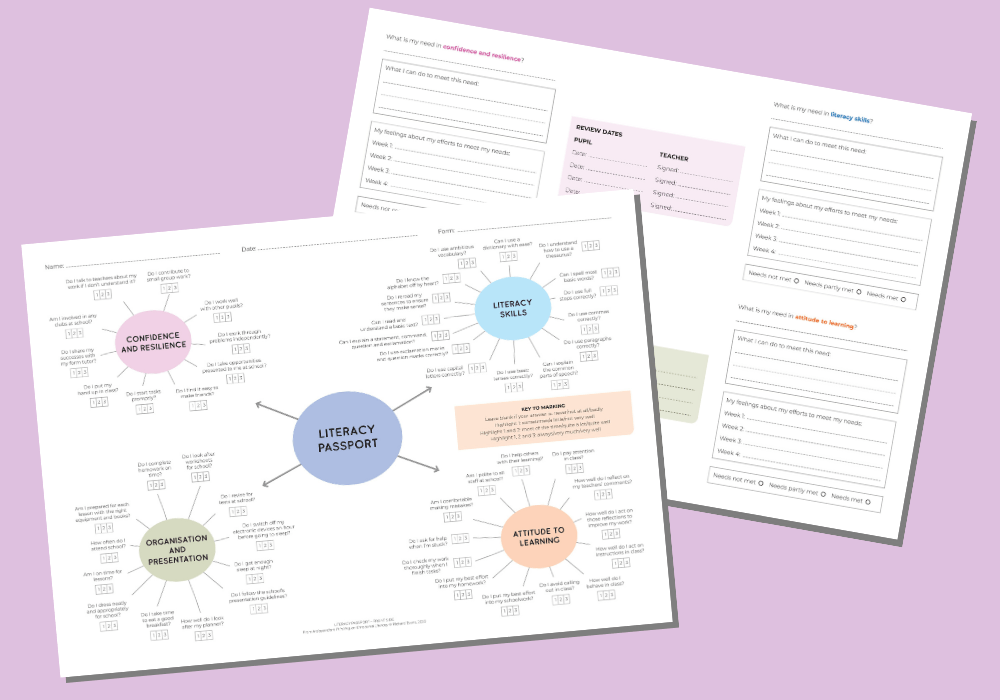School led tutoring – 2024 guidance and advice for teachers

Discover everything about school-led tutoring in 2024, from funding and choosing tutors to scheduling and making it work effectively…

- by Teachwire

Uncover the keys to successful school led tutoring in 2024 with our guide to funding, tutor choices and impactful strategies…
Children all learn at different stages, but the long shadow of the Covid lockdowns means that those from disadvantaged and vulnerable backgrounds remain behind in comparison to their peers and expected standards.
As a result, the Department for Education has extended its school-led tutoring programme (also known as the National Tutoring Programme). The funding is still available for 2023/24, albeit at a reduced rate.
This reduction could indicate that the DfE is phasing the funding out. While there is no word as to what will be available next academic year, with some money still available, now is a good time to review your provision.
What is school led tutoring?
Originally the DfE gave schools two options. Tutoring Partner involved bringing in tutors from an approved list. Academic Mentors involved assigning tutoring roles to in-house staff.
The introduction of a third option in 2022 gave schools a much more tailored route. They could use a mix of providers – internal and external, individuals and tutoring organisations.
Funding grants for 2024
The new school led tutoring route allows schools a mix-and-match approach, with the flexibility to match tutors with students. However, it is only funded at £67.50 per eligible pupil, to cover 25% of the cost.
This means that schools need to find significantly more money to provide this support. This is a dramatic reduction from this initial 75% or 95% grants under the old two routes. The government is now only funding 25% of costs for these for the 2023/24 academic year.
Check your school led tutoring 2023/24 funding allocation via the gov.uk website. This money is not opt-in so there is no application.
Instead, you will receive the grant via your scheduled ESFA payment. You should know by now if your school is eligible as it is likely to follow on from previous years.
However, you do need to review not just the main grant offered, but the number of pupils your school is expected to tutor and the number of hours each student should receive. This will be based on your school, rather than a general calculation.
Choosing a tutor
You can select from private tutors, tutoring organisations, current teaching or support staff, supply teachers or retired teachers and even Initial Teacher Trainees.
If you use current staff you have the advantage of existing teacher/pupil relationships and this can support learning. However bringing staff in from elsewhere can also be beneficial if they offer particularly strong skills, have years of experience or a novel approach. You may feel that a fresh face would suit your children better.
Either way, your objectives must be clear so everyone knows what the focused tutoring is there to achieve and what approach or approaches are being used.
With that in mind, the DfE provides training. You must complete the training within four weeks of starting, via self-directed online work. It concludes with a 20-question assessment.
Teachers with OTS or at least two years experience of teaching the subject they will tutor do not have to complete this. Instead, there is an optional two-hour session.
Which subjects should you focus on?
The DfE askes primary schools to focus on language, English and maths. Within this, different students may have different learning gaps.
It’s vital to assess where students’ most pressing needs so that they get the most out of the tutoring, rather than offering a generic course for all.
To ensure the tutoring is focused and effective, here are some of the questions your school needs to answer:
- How are you identifying what learning gaps your tutor-eligible students have?
- Are there common themes or is it a diverse range of needs?
- What are your agreed outcomes?
- What are the skills that you expect student to have mastered by the time the programme ends?
- How are you assessing and recording progress made?
- What will you do if progress is not made and targets not met?
How to group pupils
Research suggests that primary-aged children who received tutoring made three months of progress as a result. One-to-one tutoring is more effective than groups of three.
For this reason, the DfE states that tutoring should be for no more than six pupils with one teacher at any time. Consider a balance between the cost and benefit of the input. A mixed offering may help those who are most behind to receive the most focused support.
As lockdown was several years ago now, you may find that students’ needs do not fall neatly into year groups. A Year 5 pupil might ave a learning gap for something covered in Year 1 (the academic year which for them was most affected by the longest lockdown).
This means that you may choose to mix students from different years into the same tutoring group.
The advice is to focus on one subject for a block of around 15 hours. Give student one clear area to improve at a time.
This does not mean that you can only tutor pupils in maths or English. Instead, it’s about the fact that students benefit from only receiving tutoring for one subject at any given time. This is particularly the case when you consider that they will continue to study a wide range of classes within their main programme.
When should tutoring occur?
It’s tempting to put additional support into afternoon sessions. However, the unintended result of this is that after a morning of maths and English, afternoon tutoring may cause students to miss out on the subjects they are excellent in, such as creative subjects or sports.
This can have a secondary impact too. It may unintentionally put students off school by overloading them with the subjects they struggle with the most. So what to do?
The first option is to run tutoring at the same time as main lessons. This is with the aim that the intensive teaching will not only close the gap but stop any further loss, even if students are missing main teaching in key subjects.
The second is to remove students from other subjects, in discussion with pupils themselves. To avoid a timetable headache, presenting a limited set of options might make this easier.
Thirdly, you could plan sessions at different times each week to ensure that no one subject is unduly affected. This may be the best option in terms of a balanced timetable. However, it takes planning and clear timetabling so everyone knows when and where they need to be.
Out-of-hours tutoring
Finally, there is the option of out-of-school hours tutoring, either as after-school sessions or a holiday programme.
All of these options have issues. It’s up to you, alongside pupils and families, to decide which option is best. If you do opt for lessons in the summer holidays, you can submit your end-of-year statements in September, allowing you to include the tutoring provision.
In conclusion
Whatever you do, one thing is clear – tutoring can supercharge pupils’ learning. By placing tutoring into the hands of teachers – the experts on each child’s academic progress – we have a real opportunity here to make significant and life-long impacts. What a privilege that is.
Hannah Day has taught in the West Midlands for almost two decades. She specialises in art and believes that a varied curriculum is vital for student success.
6 ways to make school led tutoring work

Keep it calm and check the tech: successful support not only requires input from tutors, but teachers and schools too, says Adele Key…
1. Choose study groups carefully
This early part of the process can make or break the sessions that follow. Consider not only academic ability when choosing small groups for tuition, but how to mix the right personalities.
Sometimes this can be a steep learning curve. In a group of three I selected, one child became domineering, not giving the others a chance to contribute. Another of my earlier groups featured three pupils who were all quiet together: when it came to a tutor asking a question, nobody responded.
While it is ultimately down to the tutor to get the best out of the sessions, teachers know their students and what they are like. Create the right combinations and everything will be easier from day one.
2. Get parents on board
Despite its many benefits, there is still occasionally stigma surrounding tuition, with some parents worrying about their child being picked out.
Pitch it and communicate to families very carefully. Explain the reasons behind tuition and the expected results. Focus on how sessions will build confidence, self-esteem and resilience, not just better grades. Get families on board from the outset, and their enthusiasm will be a great support.
3. Appoint a tutoring champion
While all classroom teachers need to have contact with their students’ tutor, a single representative for the school’s overall programme is also a huge plus, especially when tutoring sessions go across year groups.
Designating one person who can oversee how things are going is a brilliant way to help the process go smoothly. I hold this role in my own school.
When either teachers or our tutors need a quick point of contact, they know who to approach – saving everyone time and resources.
4. Make time to meet tutors
Meeting the tutor before sessions start is a key opportunity to discuss expectations, build an accurate picture of the children being tutored, share what makes them tick, and add anything else the tutor needs to know – including what you’re currently teaching so the sessions truly complement classroom learning.
The provider we use encourages tutor-teacher contact throughout the programme, with tutors providing personalised feedback at the end of every session.
After reading these notes we can link back in with pupils to discuss how they feel things are going. Similarly, if anything has happened to one of our pupils that might impact learning, we can flag this with their tutor. Sessions can then be adjusted accordingly.
5. Double-check the tech
Overall, pupils are very excited to be part of tutoring sessions, meaning they can become quickly demoralised if they can’t get up and running straight away.
Make sure you have the required technology in place and it’s fully functioning – and that this is done in plenty of time before sessions.
Providing headphones with microphones is especially helpful, we’ve found. Do test these to ensure they’re working correctly. Test firewalls too, as these can block tutoring platforms and cause frustration.
6. Get the right location
Lastly, we’ve found that securing the right space for pupils to enjoy their sessions is really important.
I’ve heard of tutoring taking place in corridors; at the back of the classroom when the rest of the class is being taught by a teacher; even outside toilets. None of these is conducive to focusing and learning.
Find an empty room, or a spacious indoor area that can hold a few group sessions. If doing the latter, make sure groups are well spread out.
Holding sessions before or after school can help alleviate distractions. On a similar note, it’s crucial to get the timing of sessions right: if they clash with something the pupils love, like PE, they may disengage.
By doing all you can to help pupils feel they aren’t missing out, they’re far more likely to stay motivated – and make the most of this major opportunity.
Adele Key is a deputy headteacher and Year 6 teacher, as well as English and maths lead at Woodlea Primary School in Chester-le-Street, which works with the Pearson Tutoring programme.
Case study: Woodlea Primary School, County Durham
Adele Key explains how digital sessions have supported pupils’ improvements in English and maths…
We chose 12 Year 6 pupils to receive tutoring – six focusing on English and six on maths. We chose these children based on our end-of-autumn-term NFER data.
They were all still working at the very beginning of Y6 expectations. We felt that these pupils needed a boost in their confidence that would help them with attainment as well.
We could tell that their first spell of live online tuition worked well simply because we could see the links the children were making between their sessions and what they were doing in class. For this reason, we expanded it to include additional tutoring for Year 5.
How does it work?
We buy online tuition in blocks of one-hour sessions involving one tutor with small groups of two or three children (we use Pearson, but there are multiple providers out there).
Once we’ve specified the subject and topics that we want to cover, we choose the tutors and then send them a short biography of each child they will be working with.
The information includes where they are in their age-related expectations and the key areas in which they need help. At first our children had weekly sessions, but we soon moved to twice weekly as we feel it is much more beneficial.
We’ve worked hard to marry up the tuition sessions with the concepts that we’re teaching in class as much as we can. In Maths, the Year 5 teacher chose number units for tuition sessions to support arithmetic and improve speed and accuracy.
In Year 6, I chose fractions as I know this is an area of weakness and it crops up a lot in SATs. It was a little more straightforward for English as we chose reading skills, which are transferrable across all aspects of the curriculum.
Feedback loop
It is vital that we have a feedback loop. Most of the time we will see the children ‘getting’ concepts that challenged them before, but we also get feedback directly from tutors.
At the end of a session, the tutor will rate each child on their confidence, understanding and engagement using a function on the Bramble live online tuition platform.
They can also give us more detailed written feedback through a text summary, picking out the areas where a child has excelled, but also pointing out concepts they struggle with. We read the feedback every week and it helps to inform our own lesson planning as well.
Each session is also automatically recorded and transcribed, so we can use this feature as an added layer of safeguarding. If there was ever an issue during an online session, we would be able to quickly check the transcript.
The children are aware that we could go in and check up on what happened in a session if necessary. We’ve never had to use the feature and never expect to, but it gives teachers, tutors and parents peace of mind.
How do children respond?
When I go to get the children for their tuition sessions, they’re already out of their seats and on their way. Children are so motivated by technology these days that they don’t seem to see it as work.
It’s also easier for many children to say that they don’t understand something when they are in a group of three learning online than when they are in a class of 30.
We had one Y6 girl who was very quiet in class but when she was on a live online tuition session she couldn’t stop talking!
The fact that the sessions mainly use an online interactive whiteboard with brief face-to-face introductions and goodbyes probably helps. The children build up really lovely relationships with their tutors, too. Some found it quite an emotional experience when they got to the end of their sessions!
I think the online approach works so well because our children see it as a privilege to be chosen. They know they will get lots of attention from their tutor – something which is not always available in a whole-class situation.
Permanent place
I think there will be a permanent place for this type of support at our school even when the pandemic is long gone.
I talked to my headteacher about this and he agreed that the live online tuition could replace some of the interventions that we already use in school, such as after-school tuition, which is currently delivered by staff members.
My main piece of advice for anybody who goes down the tuition support route is to meet the tutor online at the start of a block of sessions.
Taking the time to develop a relationship and to talk through the background of each child makes it easier for the tutor to hit the ground running. We have met all of our pupils’ tutors and have built good relationships with them.
You also need to be aware of your technology capabilities. Sharing devices doesn’t give pupils the best experience, so each child needs access to their own. We’ve found that iPads don’t work as well so I’d recommend using either laptops or Chromebooks.
Also, if the tuition happens during the school day, it ideally needs to be outside the classroom to avoid background noise. We’re fortunate to have access to our ICT suite and library. Headsets with microphones are also a must-have.
In conclusion
We’ve had an excellent experience with our tuition support and we’ll continue with it even when all the pandemic-related grants have gone.
It does need some investment in time and preparation, but once you get going it’s very straightforward and the benefits come back by the bucket load.
Adele Key is deputy headteacher and Year 6 teacher, as well as English and Maths subject leader at Woodlea Primary School in Chester-le-Street, County Durham.









